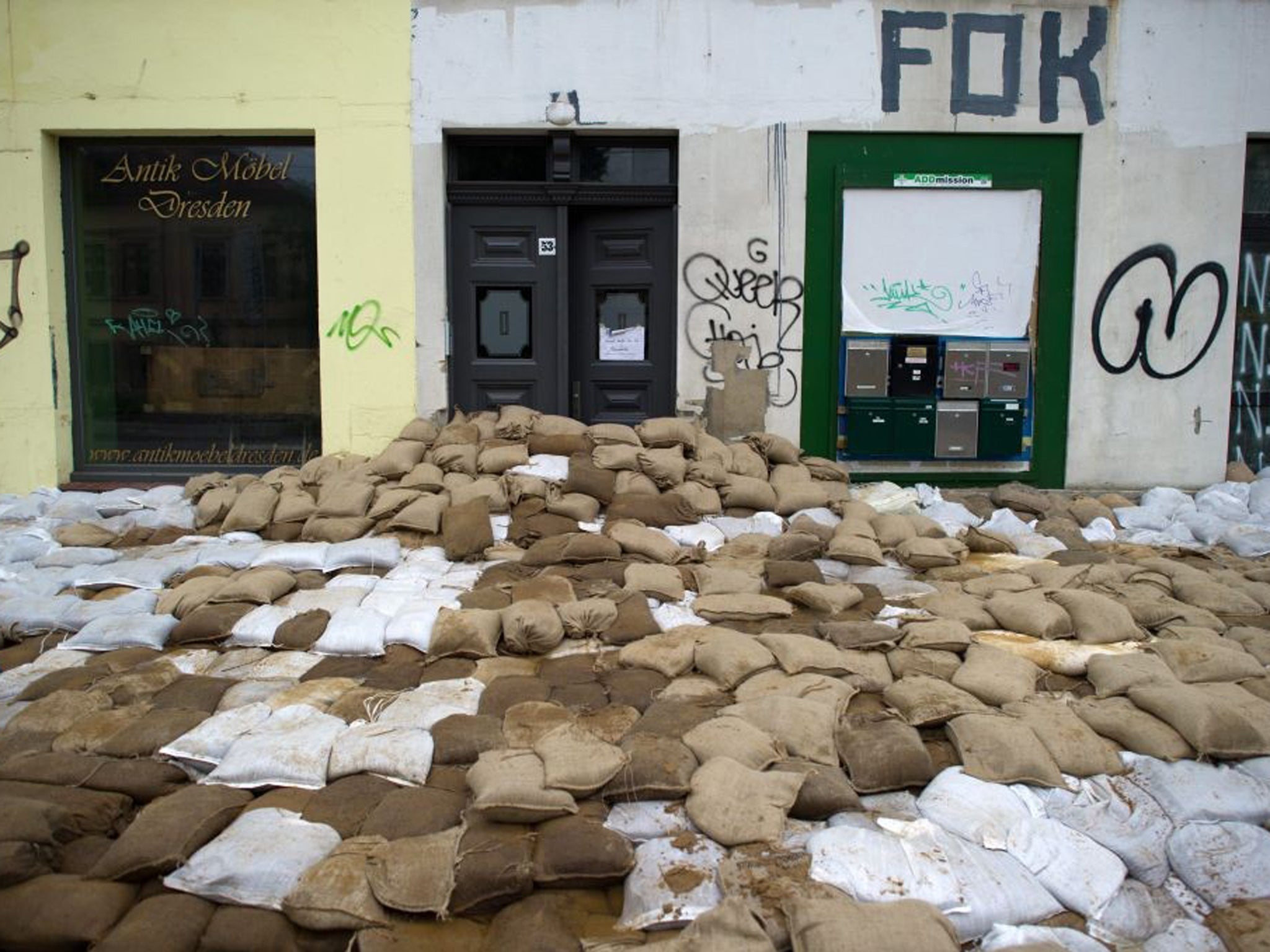Europe floods latest: Historic city centre of Dresden escapes deluge as Germany mobilises tens of thousands of emergency workers

Your support helps us to tell the story
From reproductive rights to climate change to Big Tech, The Independent is on the ground when the story is developing. Whether it's investigating the financials of Elon Musk's pro-Trump PAC or producing our latest documentary, 'The A Word', which shines a light on the American women fighting for reproductive rights, we know how important it is to parse out the facts from the messaging.
At such a critical moment in US history, we need reporters on the ground. Your donation allows us to keep sending journalists to speak to both sides of the story.
The Independent is trusted by Americans across the entire political spectrum. And unlike many other quality news outlets, we choose not to lock Americans out of our reporting and analysis with paywalls. We believe quality journalism should be available to everyone, paid for by those who can afford it.
Your support makes all the difference.The surging Elbe River crested today in the eastern German city of Dresden, sparing the historic city centre but engulfing wide areas of the Saxony capital.
Residents and emergency crews had worked through the night to fight the floods in Dresden. The German military and the national disaster team sent more support in a frantic effort to sandbag levees and riverbanks as floodwaters that have claimed 16 lives since last week surged north.
"Everybody's afraid but the people are simply fantastic and sticking together," said Dresden resident Silvia Fuhrmann, who had brought food and drinks to those building sandbag barriers.
The Elbe hit 8.76 meters (28 feet, 9 inches) around midday — well above its regular level of two meters (6 1/2 feet). Still, that was not high enough to damage city's famous opera, cathedral and other buildings in its historic city center, which was devastated in a flood in 2002.
Germany has 60,000 local emergency personnel and aid workers, as well as 25,000 federal disaster responders and 16,000 soldiers now fighting the floods.
Farther downstream, the town of Lauenburg — just southwest of Hamburg — evacuated 150 houses along the Elbe, n-tv news reported, as the floodwaters roared toward the North Sea.
In the south, the Bavarian city of Deggendorf was hit by a third levee break on Thursday, with floods gushing into neighborhoods. Scores of homes remained underwater and authorities warned that a dam was still in danger of bursting.
"It's indescribably bad," Bavarian governor Horst Seehofer said upon visiting the area. "It's beyond comparison."
In the Saxony-Anhalt city of Bitterfeld, an attempt to blow open another levee to lower waters threatening the city along the Mulde river was unsuccessful.
Some 30,000 residents in nearby Halle were urged to evacuate, meanwhile, as the Saale river reached its highest level in 400 years.
In the Czech Republic, firefighters said some 700 Czech villages, towns and cities have been hit by flooding in the last few days and some 20,500 people had to be evacuated. In the country's north, the water in the Elbe reached its highest level overnight and began to recede Thursday.
In the Slovak capital of Bratislava, the Danube was still rising from the record levels it reached a day earlier, but authorities said protective barriers have held firm so far.
So far, the floods have killed eight people in the Czech Republic, five in Germany, two in Austria and one in Slovakia.
AP
Join our commenting forum
Join thought-provoking conversations, follow other Independent readers and see their replies
Comments